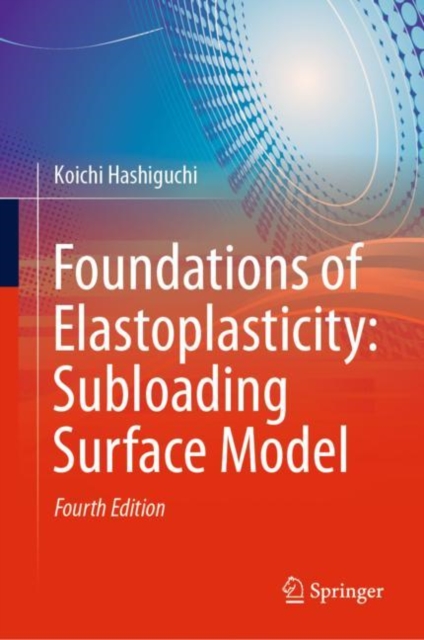
Foundations of Elastoplasticity: Subloading Surface Model Hardback
by Koichi Hashiguchi
Hardback
- Information
Description
This book is the standard text book for elastoplasticity/viscoplasticity which is explained comprehensively covering the rate-independent to -dependent finite deformations of metals, soils, polymers, crystal plasticity, etc. and the friction phenomenon. Concise explanations on vector-tensor analysis and continuum mechanics are provided first, covering the underlying physical concepts, e.g. various time-derivatives, pull-back and push-forward operations, work-conjugacy and multiplicative decomposition of deformation gradient tensor.
Then, the rigorous elastoplastic/viscoplastic model, called the subloading surface model, is explained comprehensively, which is based on the subloading surface concept to describe the continuous development of the plastic/viscoplastic strain rate as the stress approaches to the yield surface, while it can never be described by the other plasticity models, e.g. the Chaboche-Ohno and the Dafalias-Yoshida models assuming the purely-elastic domain.
The main features of the subloading surface model are as follows: 1) The subloading surface concept underling the cyclic plasticity is introduced, which insists that the plastic deformation develops as the stress approaches the yield surface.
Thus, the smooth elastic-plastic transition leading to the continuous variation of the tangent stiffness modulus is described always. 2) The subloading-overstress model is formulated by which the elastoplastic deformation during the quasi-static loading and the viscoplastic deformation during the dynamic and impact loading can be described by the unified equation.
Then, only this model can be used to describe the deformation in the general rate of deformation, disusing the elastoplastic constitutive equation. 3) The hyperelastic-based (visco)plasticity based on the multiplicative decomposition of deformation gradienttensor and the subloading surface model is formulated for the exact descriptions of the finite elastic and (visco)plastic deformations. 4) The subloading-friction model is formulated for the exact description of the dry and the fluid (lubricated) frictions at the general rate of sliding from the static to the impact sliding. Thus, all the elastic and inelastic deformation/sliding phenomena of solids can be described accurately in the unified equation by the subloading-overstress model.
The subloading surface model will be engraved as the governing law of irreversible deformation of solids in the history of solid mechanics.
Information
-
Out of StockMore expected soonContact us for further information
- Format:Hardback
- Pages:853 pages, 179 Illustrations, color; 372 Illustrations, black and white; XX, 853 p. 551 illus., 179
- Publisher:Springer Nature Switzerland AG
- Publication Date:13/06/2023
- Category:
- ISBN:9783030931377
Other Formats
- EPUB from £186.58
£199.99
£135.40
Information
-
Out of StockMore expected soonContact us for further information
- Format:Hardback
- Pages:853 pages, 179 Illustrations, color; 372 Illustrations, black and white; XX, 853 p. 551 illus., 179
- Publisher:Springer Nature Switzerland AG
- Publication Date:13/06/2023
- Category:
- ISBN:9783030931377